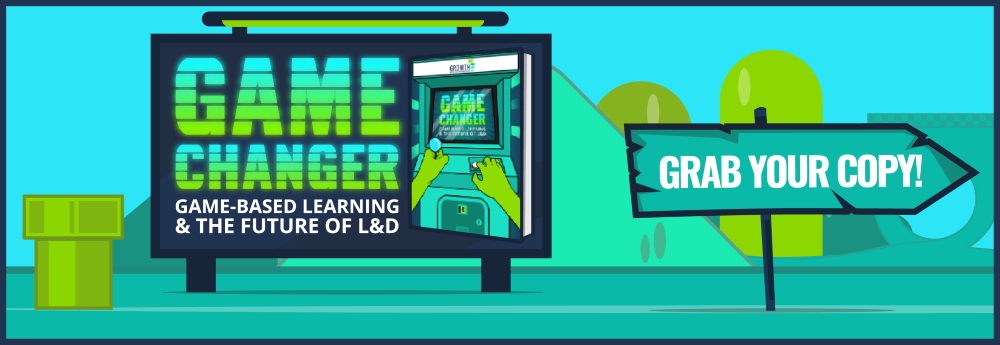 We’re all about gamifying online learning here at Growth Engineering. Gamification is the magic ingredient we add to all of our learning technologies to get learners engaged and make them actually want to take the content.
We’re all about gamifying online learning here at Growth Engineering. Gamification is the magic ingredient we add to all of our learning technologies to get learners engaged and make them actually want to take the content.
The tools in our gamification-kit are called game mechanics and today we’re going to look at one of the most powerful game mechanics – Levels.
So, what are levels?
The concept of levels was born in the early days of video gaming. When someone starts playing a game for the first time, they need time to adapt to the controls and the game-play. Because they’re an inexperienced newbie, the first level is generally quite easy.
As they progress through the game, from second to third level and beyond, the challenges get more difficult – which is great, because the player is becoming more skilled. In essence, levels let the player measure their proficiency in that particular game and the bite-sized, incremental challenges keep the player hooked.
But what’s that got to do with online learning?
Levels can be used in much the same way to secure learners engagement on your LMS. Let’s take a look at Growth Engineering’s very own internal Academy.

There’s no point having a great level structure if nobody can see it! As you can see here, the level details are front-and-centre on the main dashboard of the LMS. The learner can see at a glance which level they are on and how far they need to go to complete it.
So, let’s take a closer look at this level.

Here, the learner can get a clearer look at the level. On the left, there’s a summary of the level completion and the experience points earned so far. On the right, we’ve got a list of content.
As you can see, each item in the list has a number of experience points attached. These points contribute to the total score for the level. If the learner doesn’t complete the content, they won’t earn the required number of points to pass to the next level.
What’s going on here then?
The secret science behind levels is pretty straight-forward. Humans have a natural urge to complete things. By splitting your content into levels, you create a sequence of mini-victories. In this way, an end is always in sight, and the learner doesn’t feel as though they’re tackling some impossibly huge task.
 If you want to read more about how UX designers exploit your obsessive-compulsive tendencies, check out our article on progress bars – the hidden menace…
If you want to read more about how UX designers exploit your obsessive-compulsive tendencies, check out our article on progress bars – the hidden menace…
Like most things, when it comes to gamification, levels let you hack your learners’ brains and hijack their most basic urges to get the most out of them.
Besides this, they also help you to create a logical pathway throughout the learning, forcing you to think of the best way to present the information to your learners. By creating a continuous development programme in this way, you are effectively automating the learning process.
Your learners progress through the levels at a pace that suits their competencies reducing the need for regular training interventions. This takes a huge workload off of the L&D department leaving you to pursue more ways to make the training more effective!
If you want to leverage some gamification superpowers in your online learning, download our white paper below. It’s full of facts, tips and other fun stuff that’s guaranteed to turn you into a gamification wizard in no time.









